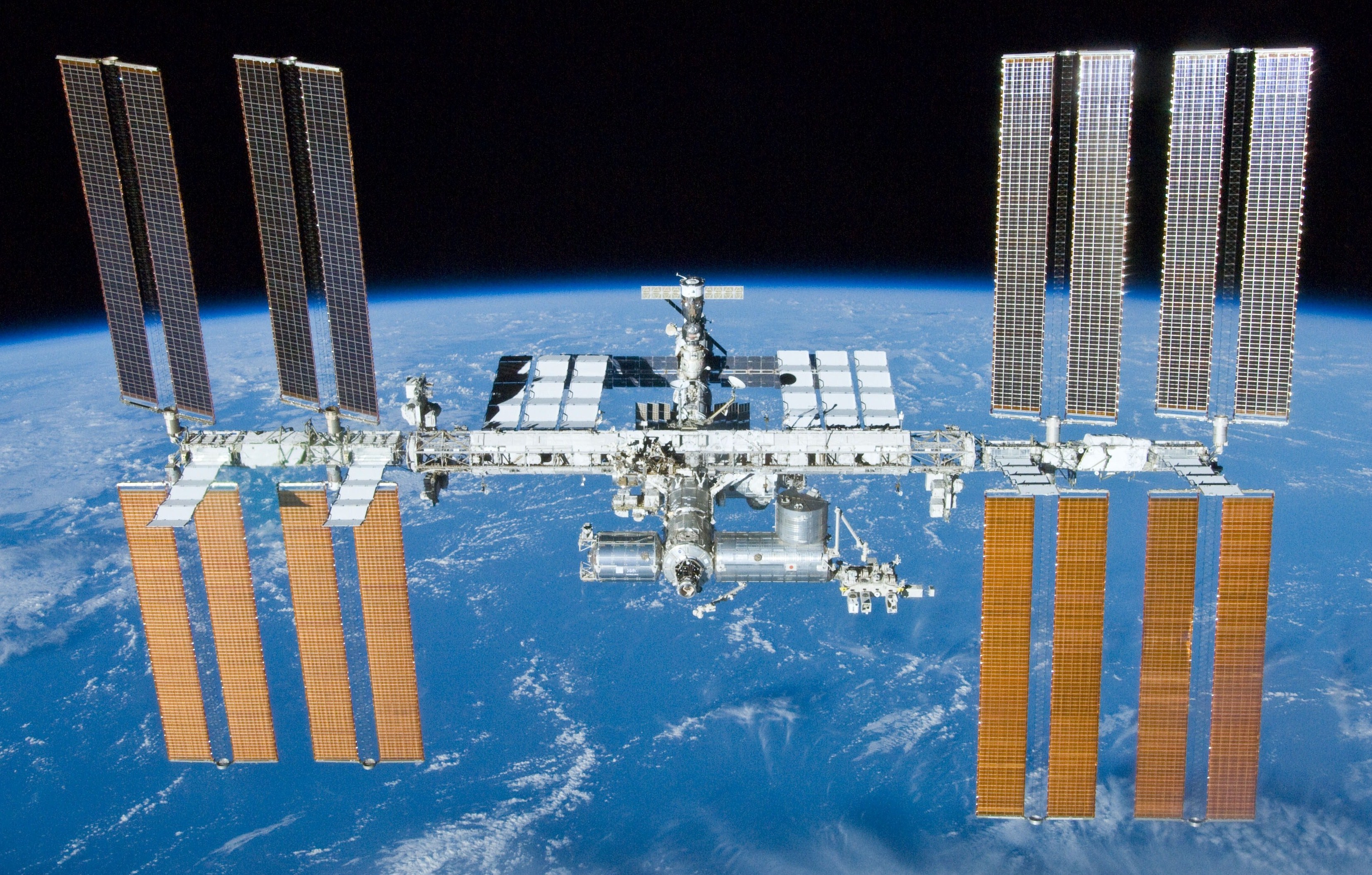By NASA/Crew of STS-132 - http://spaceflight.nasa.gov/gallery/images/shuttle/sts-132/hires/s132e012208.jpg
(http://spaceflight.nasa.gov/gallery/images/shuttle/sts-132/html/s132e012208.html), Public Domain, Link
We have seen on TV that astronauts float weightless in the International Space Station (ISS), and during spacewalks. In fact, the ISS serves as a microgravity research laboratory in which crew members conduct experiments in biology, physics and other fields. Microgravity is more or less a synonym of weightlessness and zero-g (zero gravitational field strength).
Nevertheless, the ISS maintains an orbit with an altitude h of between 330 and 435 km so, according to Newton's law of universal gravitation, the gravitational field strength g in the ISS is:
Taking into account that the gravitational field strength at the surface of the Earth is g=9.8 m/s^2, we conclude that things and astronauts inside the ISS weigh only a 10% less than they do on Earth! The weight is almost the same! How is this possible?
Please, explain your reasoning. You can post your attempted answers in the comment box below. Please, do not use Facebook or Twitter to give your answers.


